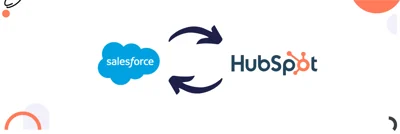Enhancing Productivity with HubSpot Task Management Tool
Learn to create, assign, and manage tasks with the HubSpot task management tool. Discover key features and benefits to stay organized and focused.

Explore how HubSpot's project management tool helps teams manage tasks, track progress, and collaborate efficiently within the CRM and marketing platform.
HubSpot is widely known and used as a robust CRM and marketing tool, but it extends far beyond these functions due to its capabilities. The HubSpot Project Management, used by many teams as a project management solution through built-in task and collaboration features, helps businesses manage projects efficiently within the same platform they use for sales and marketing.
The consolidation of project management into the HubSpot ecosystem helps teams to seamlessly track tasks, collaborate, and ensure alignment across all departments. This integration makes HubSpot an invaluable asset for organizations of all sizes by streamlining workflows and enhancing overall productivity.
The HubSpot Project Management Tool refers to the built-in task and collaboration features that teams can use to manage projects within the platform. This tool provides key features to help teams stay organized and aligned with business goals by simplifying core aspects of project coordination, though it may not replace specialized project management platforms for complex needs
HubSpot’s project management capabilities help users create tasks, set due dates, assign tasks to specific team members, and monitor progress in real time. Moreover, you can link tasks to CRM records or marketing campaigns and ensure that all activities are interconnected and that nothing falls through the cracks.
Task Creation and Management: HubSpot’s project management tool lets users create tasks easily, assign them to team members, and set deadlines. Moreover, you can break down any task into smaller subtasks to make it easier while managing complex projects.
Due Dates and Notifications: To ensure that all deadlines are met, users can set due dates for tasks and receive notifications. So, everyone stays accountable and aware of their responsibilities with HubSpot’s notification system.
Team Collaboration: HubSpot’s project management tool promotes collaboration as it allows team members to communicate, share files, and provide updates within the platform. It reduces the chances of miscommunication and ensures that all team members are on the same page.
Progress Tracking: HubSpot’s basic progress tracking tools help users monitor the status of tasks and projects. While visual indicators like due dates and task completion status are available, advanced views like Gantt or Kanban charts require integrations or Ops Hub customization.
Integration with CRM and Marketing Tools: Another standout feature of HubSpot’s project management tool is its seamless integration with the broader HubSpot ecosystem. Tasks can be directly linked to CRM data, marketing campaigns, or sales activities, giving you a complete picture of how your projects fit into your business processes.
The HubSpot Project Management Tool works seamlessly with the rest of HubSpot's CRM and marketing tools. Businesses can manage projects alongside their marketing and sales activities, in a centralized platform for all their needs.
For businesses already using HubSpot’s CRM or marketing tools, the built-in project management features offer a convenient way to manage tasks and timelines without introducing a new platform. By consolidating project work within the same environment used for sales and marketing, teams can reduce context-switching, improve collaboration, and maintain better visibility into ongoing activities.
This integration ensures that all team members are aligned and working efficiently due to seamless communication and collaboration. Moreover, you’ll have enhanced visibility into project progress along with visual indicators and real-time insights helping teams make informed decisions while staying on track. HubSpot’s project management features enhance productivity, simplify complex workflows, and drive better results, whether it’s about overseeing onboarding processes, managing marketing campaigns, or coordinating sales follow-ups.
Managing Marketing Campaigns: HubSpot’s project management tool is incredibly helpful for businesses looking to link campaigns to relevant CRM records and marketing assets, as it helps assign tasks, set deadlines,s and track progress.
Sales Follow-Ups: When a lead is contacted, the sales team can use HubSpot’s project management tool to manage follow-up tasks. To ensure that all customer interactions are documented and none of the lead is left unattended, you can link these tasks to CRM records.
Onboarding Processes: HubSpot’s project management tool helps streamline the process for the teams that are managing the onboarding process of new clients or employees. It helps create a series of tasks to guide team members through the onboarding process while ensuring the efficient completion of all essential steps.
HubSpot’s project management capabilities are powerful on their own, but you can make it more versatile by integrating other tools. With different integrations, it can help enhance collaboration, optimize workflows, and streamline project tracking all within the HubSpot ecosystem. Let’s have a look at some integrations that can boost your project management experience.
If you want to manage tasks and collaborate on projects with greater flexibility, you should consider the integration of Trello or Asana with HubSpot. Tasks can be synced between these tools and HubSpot to ensure that one platform’s updates are reflected in the other.
Integrating Trello or Asana with HubSpot allows you to manage tasks and collaborate on projects with greater flexibility. You can sync tasks between HubSpot and these tools, ensuring that updates in one platform are reflected in the other. Teams that already use Trello or Asana for task management can continue leveraging these tools with this integration while also benefiting from HubSpot’s CRM and marketing functionalities.
To keep your team’s communication centralized and efficient, you should consider integrating Slack with HubSpot. With this integration, you’ll receive notifications in Slack for all the updates related to HubSpot’s projects, deals, or tasks.
That’s how you can keep your team informed and ask them to address any issue on the spot. Slack channels facilitate real-time collaboration and eliminate the need for various email exchanges by linking them to specific projects in HubSpot.
Undoubtedly, one of the crucial aspects of project management is managing documents, but you can make it easier to organize and access project-related files by integrating Google Drive or Dropbox with HubSpot.
This integration ensures that all relevant information is quickly accessible when needed, as you can link documents directly to HubSpot tasks or CRM records. In this way, your team will have the latest documents at their fingertips because they’ll no longer waste time searching for files.
If you want to monitor the time spent on specific tasks or projects, you should consider integrating time tracking tools like Harvest with HubSpot. Time management is critical for any project, and integrating a time-tracking tool like Harvest with HubSpot helps you monitor how much time is being spent on specific tasks or projects.
You can gain valuable insights into project timelines and make data-driven decisions regarding resource allocation. Because you can directly track time within HubSpot. This integration allows you to track time directly within HubSpot, providing valuable insights into project timelines and helping you make data-driven decisions about resource allocation.
Agencies or teams that bill clients based on time can benefit from this integration due to its accurate time tracking and invoicing.
These integrations seamlessly work within HubSpot and help you overcome common project management challenges while optimizing your workflows.
For instance, Trello’s integration with HubSpot eliminates the need to switch between tools, as you can manage tasks across multiple platforms by synchronizing them. However, Slack’s integration with HubSpot ensures real-time communication about project updates. No more delays caused by missing emails.
Google Drive or Dropbox integrations make it easier to link relevant documents to tasks and help in document management by centralizing file storage.
Whereas, Harvest integration ensures that projects stay on schedule and within budget as it helps in tracking project time so the teams can manage their time more effectively.
Apart from the HubSpot project management tool’s various benefits, it does have some limitations, too, especially when it’s compared to specialized project management software. Let's have a look, so you will be aware of them.
HubSpot's project management tool is intended to be user-friendly and integrated into its larger ecosystem; nevertheless, this simplicity comes at the expense of advanced features found in dedicated project management software.
For example, HubSpot does not offer native Gantt chart functionality. Identifying dependencies and managing timelines for complex projects requires third-party integrations or external tools. Furthermore, the specialized project management platforms, such as Smartsheet and Microsoft, offer advanced reporting capabilities and resource allocation features that HubSpot might not provide you.
Scalability for large projects or teams is another factor that might be challenging while using HubSpot’s project management tool. When the project extends and becomes complex, HubSpot’s project management tool might not provide you with the in-depth capabilities required while managing multiple project dependencies, extensive task hierarchies, and large teams. It can be specifically challenging for large organizations that are supposed to manage a project’s portfolio simultaneously, where resource management and detailed planning are critical.
Besides these limitations, you can still get the most out of HubSpot’s project management tool with the following suggestions.
As we mentioned above, the integration of HubSpot with other dedicated project management tools (Trello, Asana, Monday.com) can provide you with more advanced features. So you can benefit from its additional features you need, such as advanced reporting, comprehensive Grantt charts, and resource allocation. It also allows you to enjoy HubSpot's marketing and CRM integration.
To enhance your project management capabilities, you can also explore using additional HubSpot features. For instance, HubSpot’s automation tools can help create workflows to manage task dependencies or set up custom reports, so you can track project metrics more closely. However, these features may not fully fulfill the functionalities of specialized software, but they can help bridge some gaps.
HubSpot’s project management tool helps seamlessly manage tasks, track projects, and collaborate within the familiar HubSpot ecosystem. Businesses that need to consolidate their project management efforts with other critical functions can take advantage of its integration with HubSpot’s CRM, marketing, and sales tools.
The tool eliminates the need to use multiple software platforms by providing benefits like improved organization, streamlined communication, and enhanced visibility into project progress. Its integrations with other tools can help optimize workflows and address common project management challenges. However, it has some limitations and potential scalability issues for larger projects.

Learn to create, assign, and manage tasks with the HubSpot task management tool. Discover key features and benefits to stay organized and focused.

Boost sales with HubSpot—streamline, automate, and drive revenue with content management and analytics tools.

Learn how integrating HubSpot and Salesforce boosts collaboration, streamlines workflows, and improves lead management with step-by-step setup.